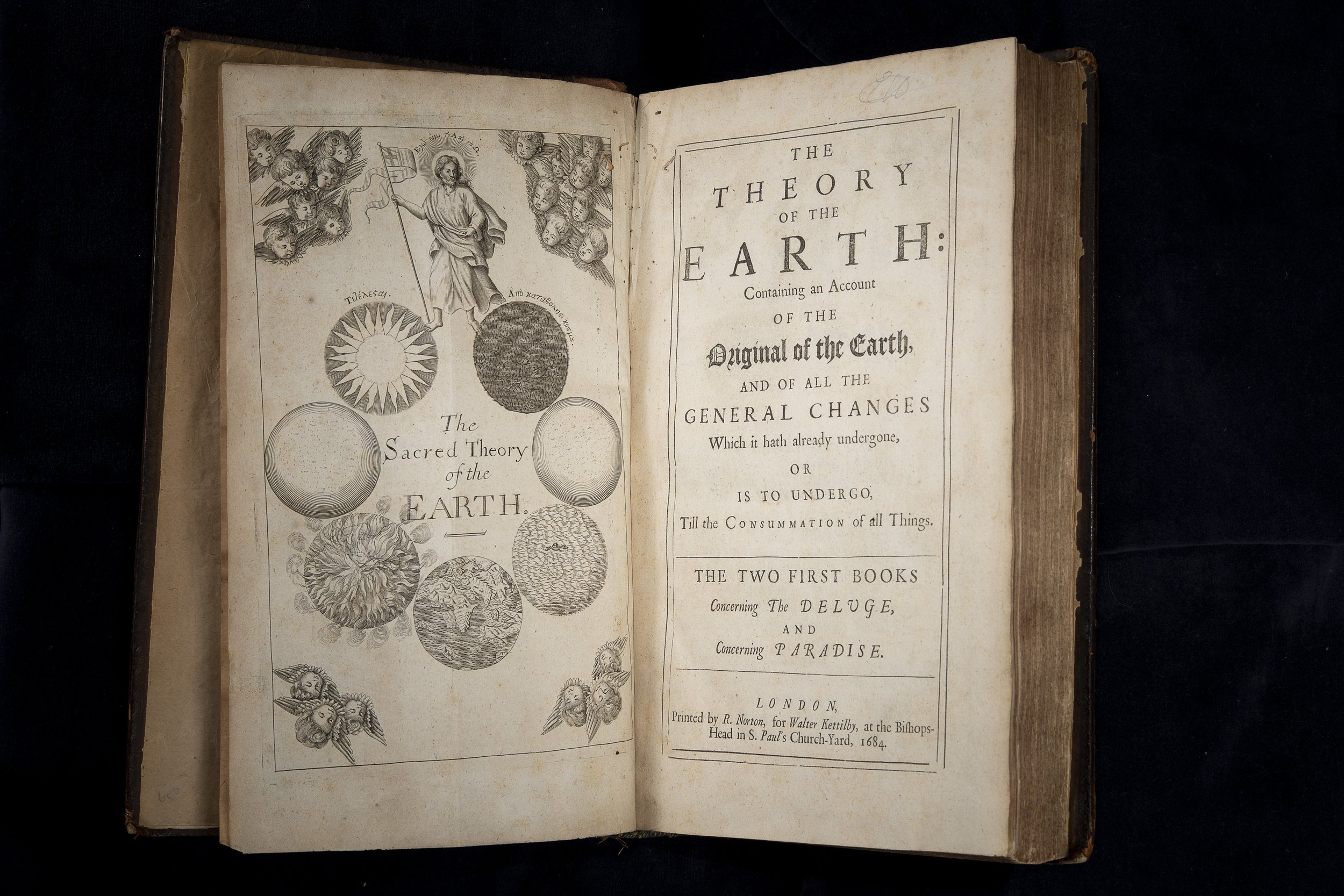
Thomas Burnet, The Sacred Theory of the Earth (1684)
The frontispiece of this text depicts a geological history of the earth that include the flood, followed by the formation of continents as the waters receded. Burnet also speculates that the earth will undergo a fiery conflagration before it returns to an Edenic state.
Held in the Kinney Center’s rare book collection.
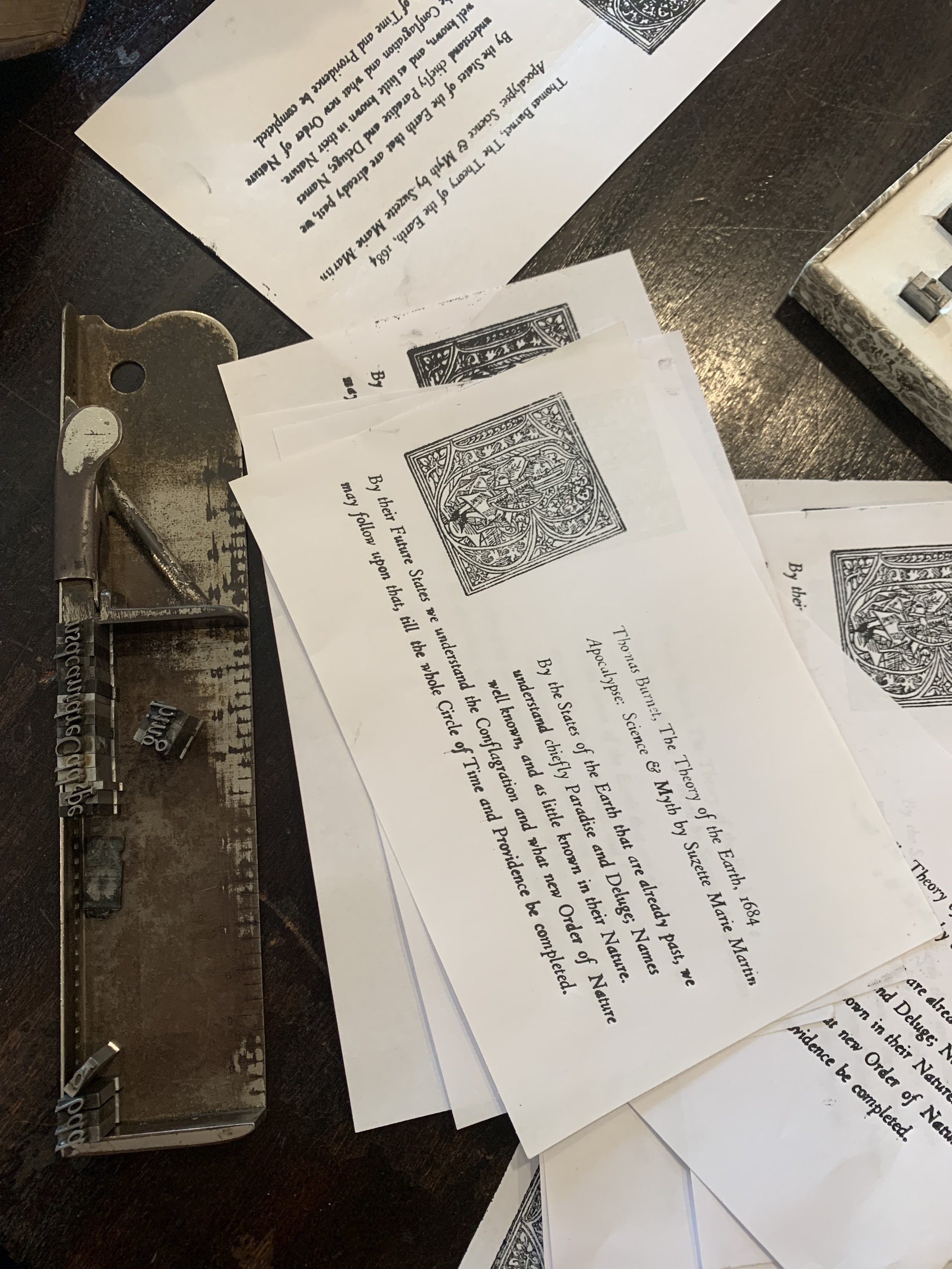
Visitors to the exhibit opening gained hands-on experience using the Kinney Center’s 20th Century acorn press to print an excerpt from Burnet’s Sacred Theory of the Earth.
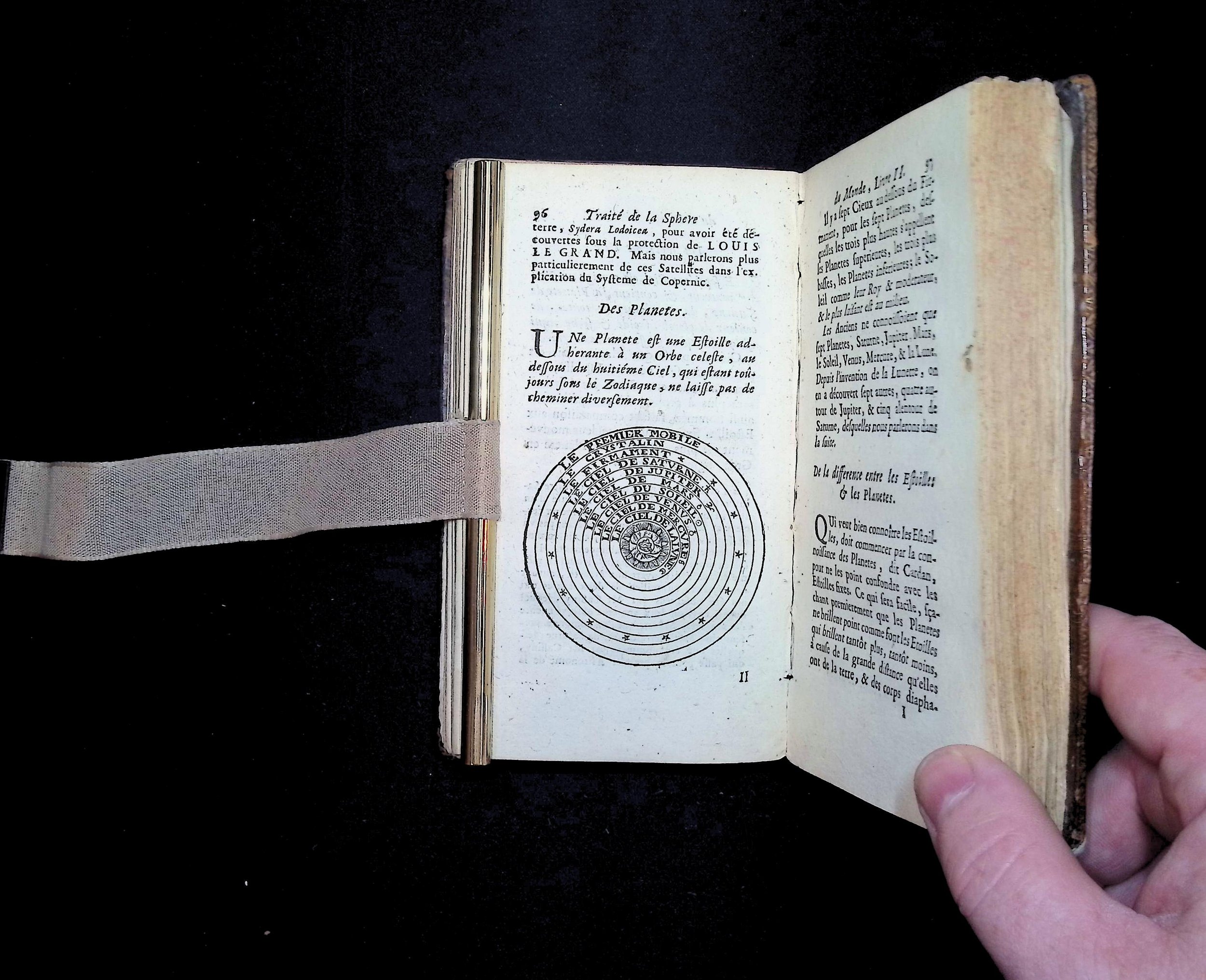
Jean Boulenger, Traite' de la sphere du monde (1688)
This text by a French mathematician investigates the rotation and movement of the Earth and other planets. This diagram explains the revolutions of the planets around the sun.
Held in the Kinney Center’s rare book collection.
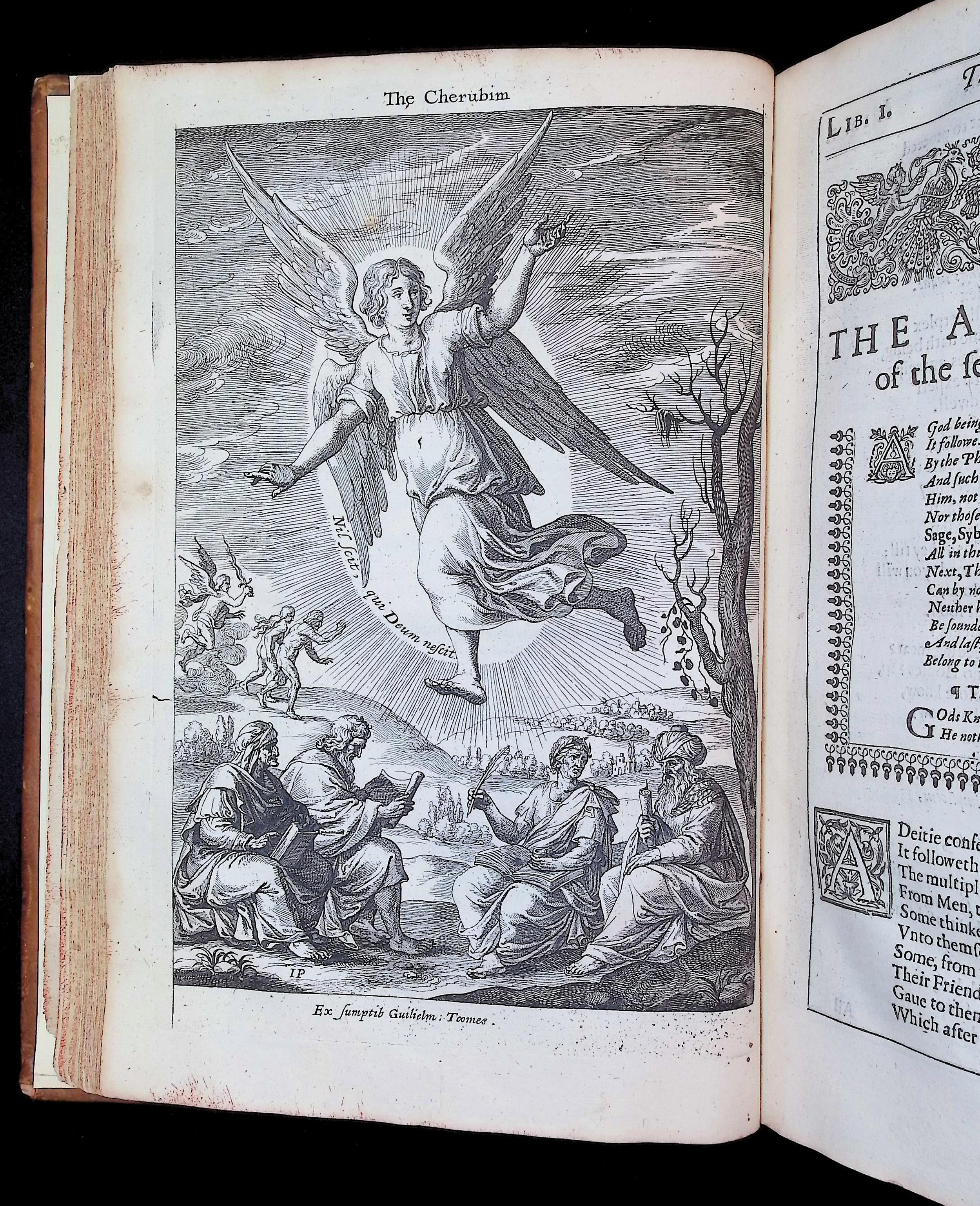
Thomas Heywood, Hierarchie of the Blessed Angels (1635)
Heywood's poetical inventory of angels including their names, orders, and offices. Depicted in this copperplate engraving, we see the fall of Lucifer and the expulsion of Adam and Eve from Eden.
Held in the Kinney Center’s rare book collection.
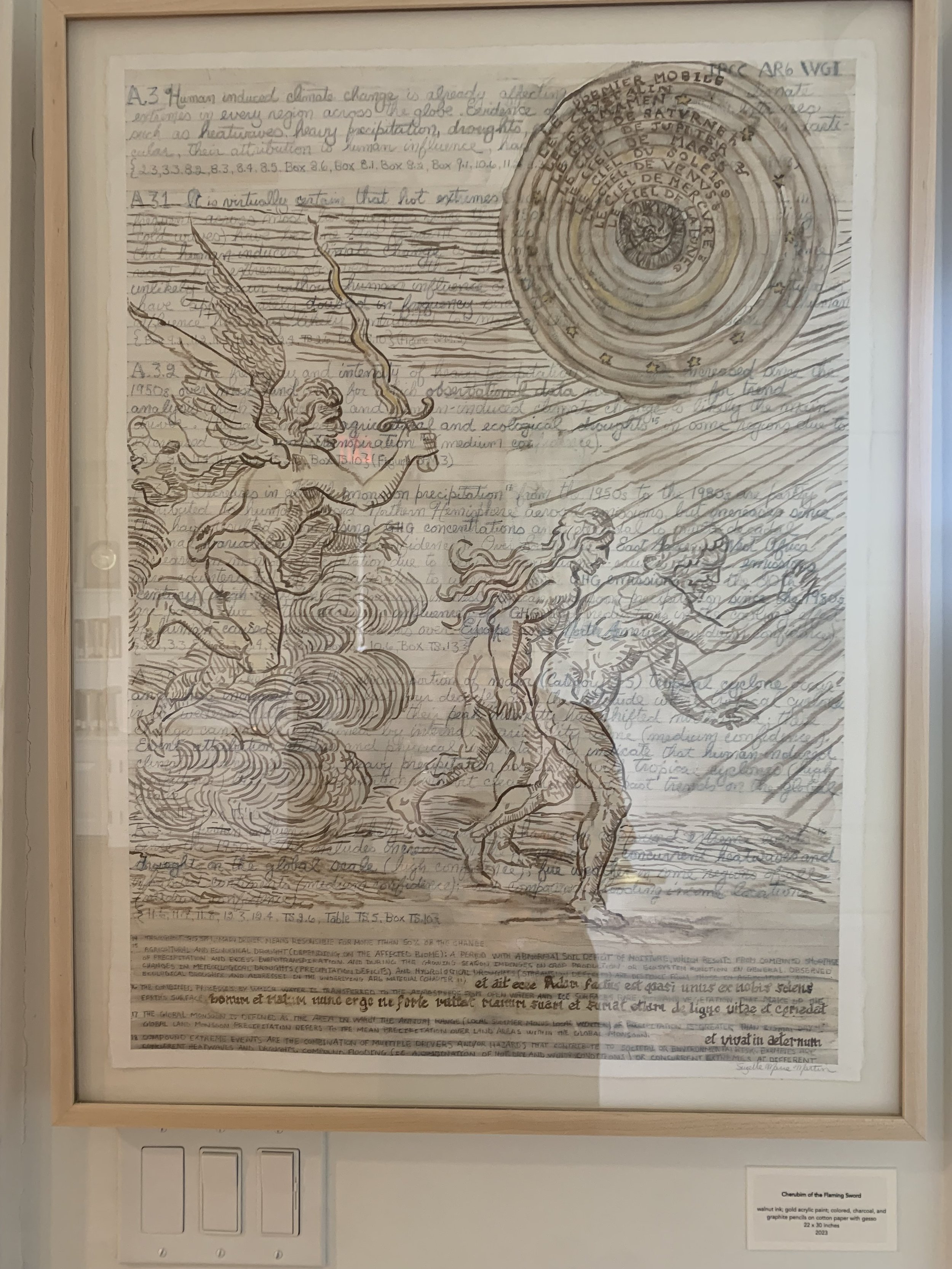
Suzette Marie Martin, Cherubim of the Flaming Sword (2023)
This original work combines language and text from the IPCC Report (2021), Vulgate Bible (1495), Hierarchie of Blessed Angels (1634), and Traité de la Sphère du Monde (1688). Together these materials offer viewers an allegory of consequences for industrialized humanity’s cumulative, destructive behaviors.
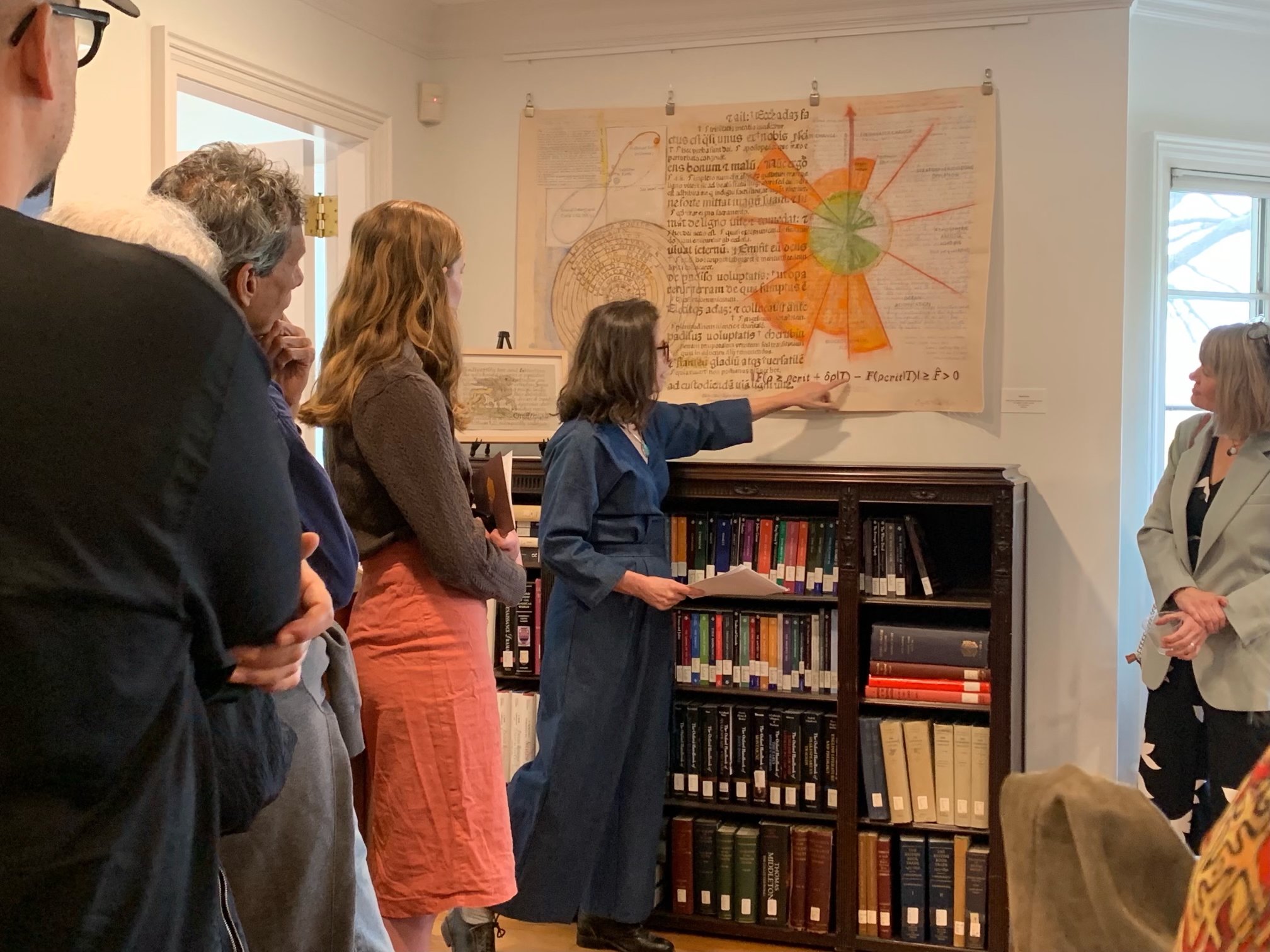
Students and members of the Amherst community listen intently as artist Suzette Marie Martin discusses her process, interspersing images and text from current IPPC reports with images from early modern earth science and geological studies and the Vulgate Bible (1495).

Vulgate Bible (1495)
This page is from the Book of Genesis. The two central columns are the text of the Bible, while the outer columns are commentary by Nicholas of Lyra (ca. 1270–1349).
Held in the Kinney Center’s rare book collection.
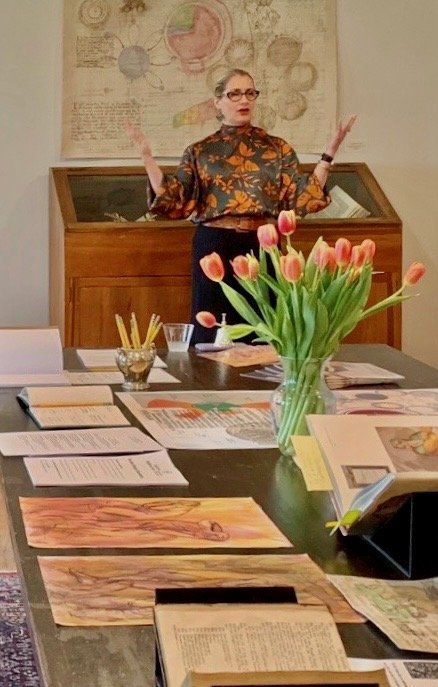
Marjorie Rubright, Kinney Center Director, welcomes guests to the opening of Apocalypse: Science & Myth.
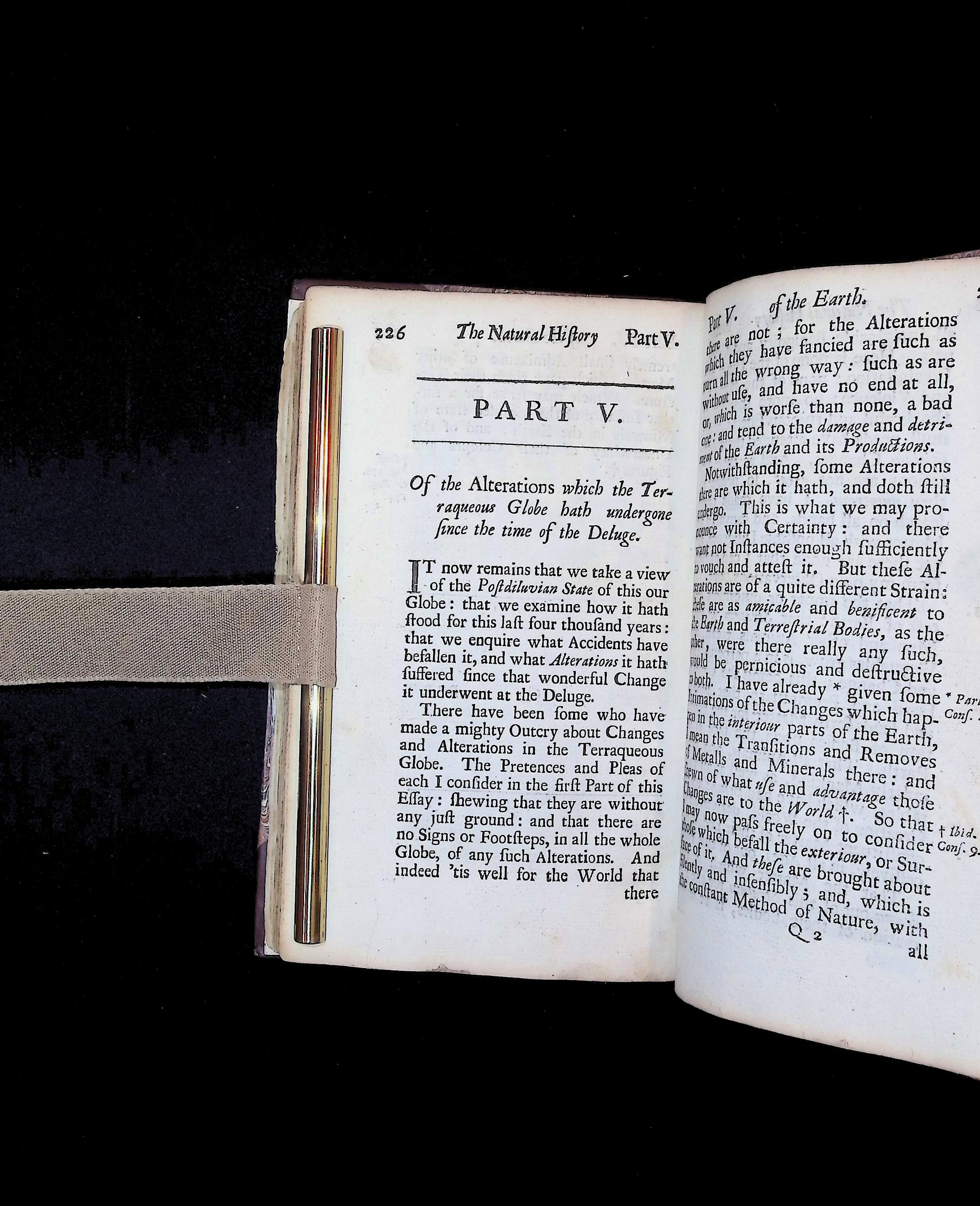
John Woodward, An Essay Toward a Natural History of the Earth (1695)
Woodward wrote about the effects of the Biblical Deluge with a particular interest in geology and the formation of minerals. Like many writers of his time, he looked for scientific evidence of the creation of the world.
Held in the Kinney Center’s rare book collection.
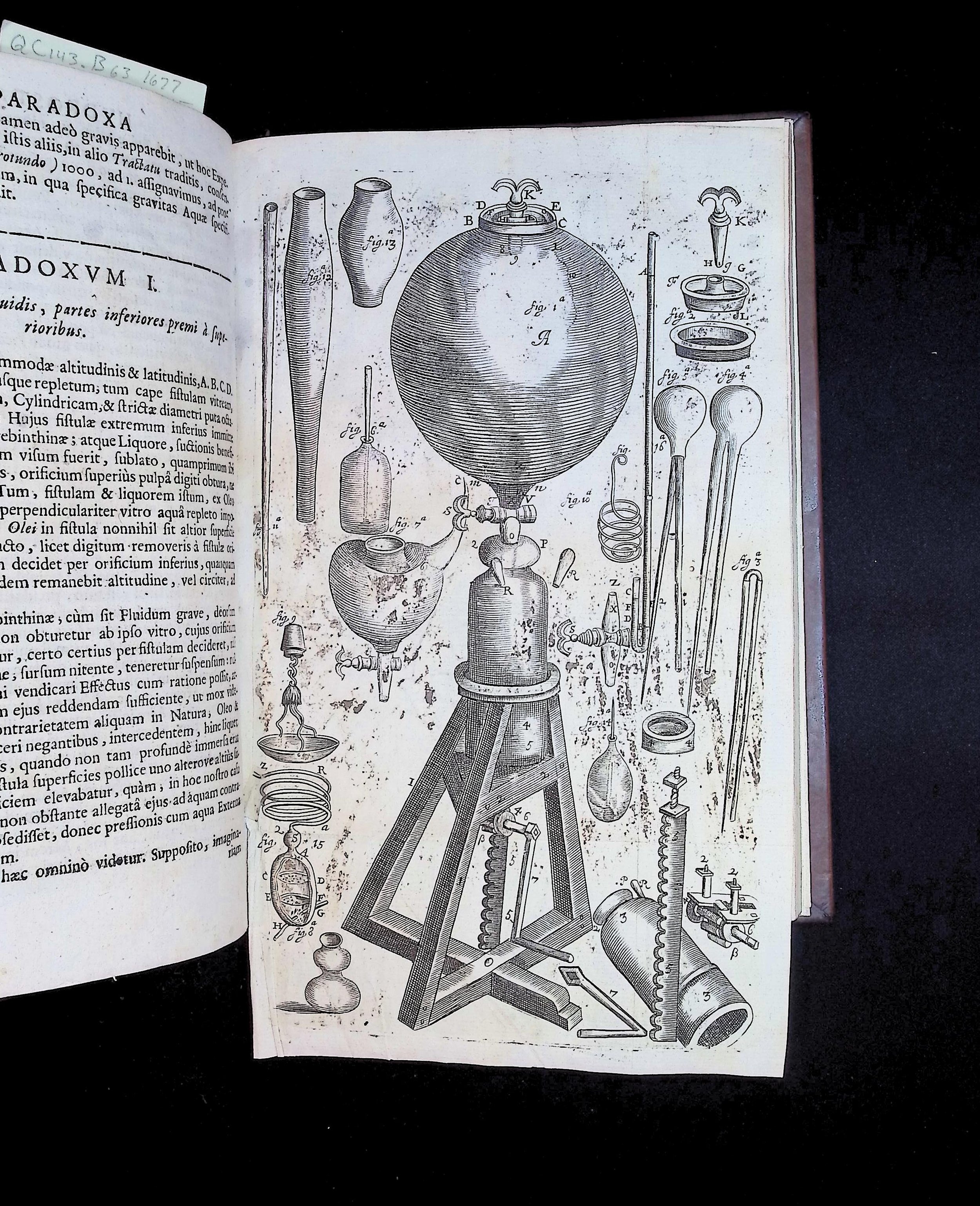
Robert Boyle, Paradoxica Hydrostatica Novis Experimentis (1677)
Although this illustration of Boyle's air pump first appeared in his New Experiments Physico-Mechanical (1660), the Center's copy of his Paradoxa hydrostatica (1677) also contains this image.
Held in the Kinney Center’s rare book collection.
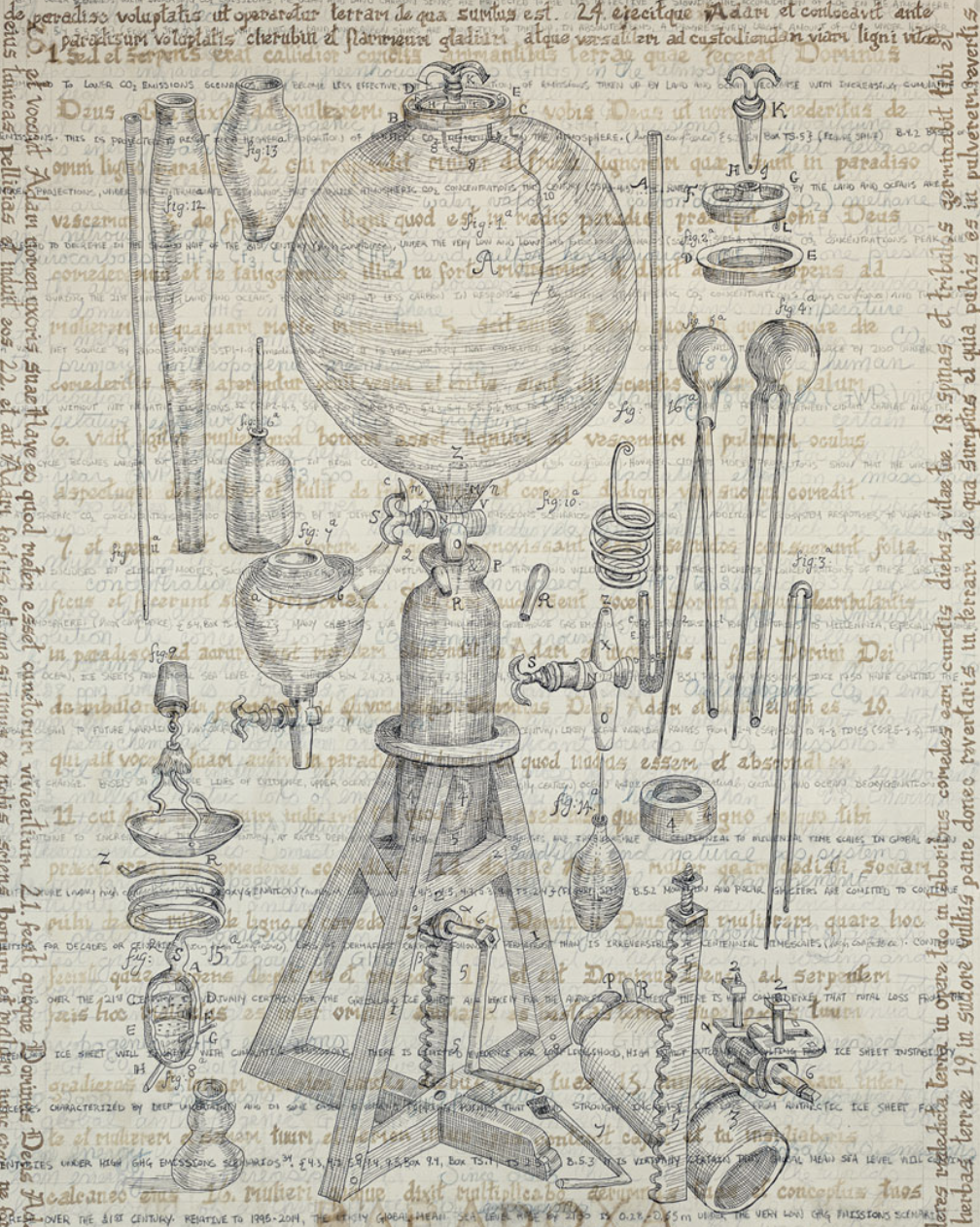
Suzette Marie Martin, Hydrostatica Paradoxica (2023).
The air pump was used in experiments for some of Boyle’s most famous scientific contributions: that vacuums can exist in nature and that the pressure of air is in inverse proportion to its volume (Boyle’s Law). Juxtaposed with text from the Vulgate Bible and IPCC report, we are reminded that Boyle’s Law helps to explain how changes in pressure and volume affect the circulation of air pollution.
Held in the Kinney Center’s permanent art collection.
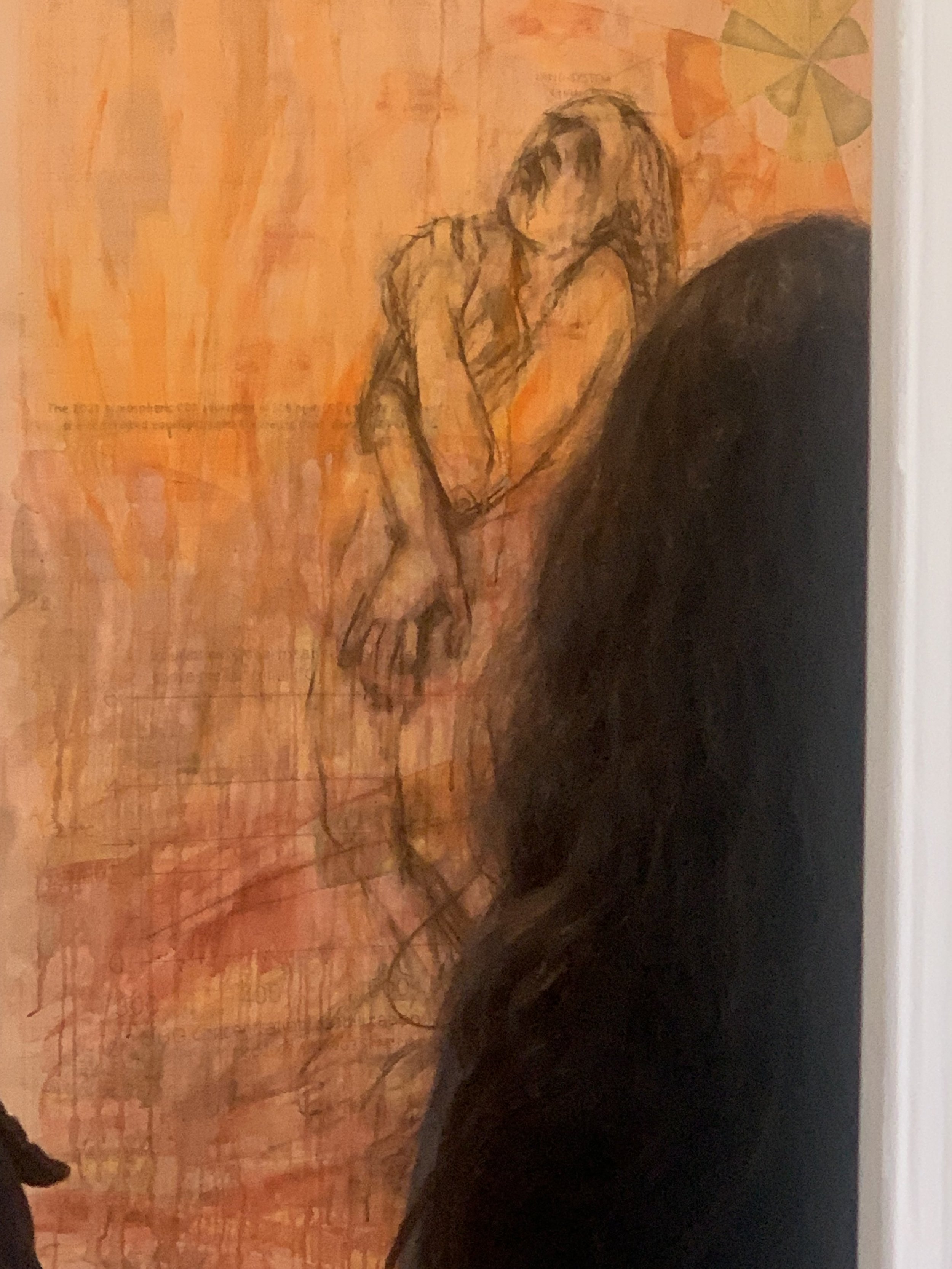
Martin’s depiction of Eve in a posture of grief comments on our own lived experiences of climate grief and eco-anxiety.
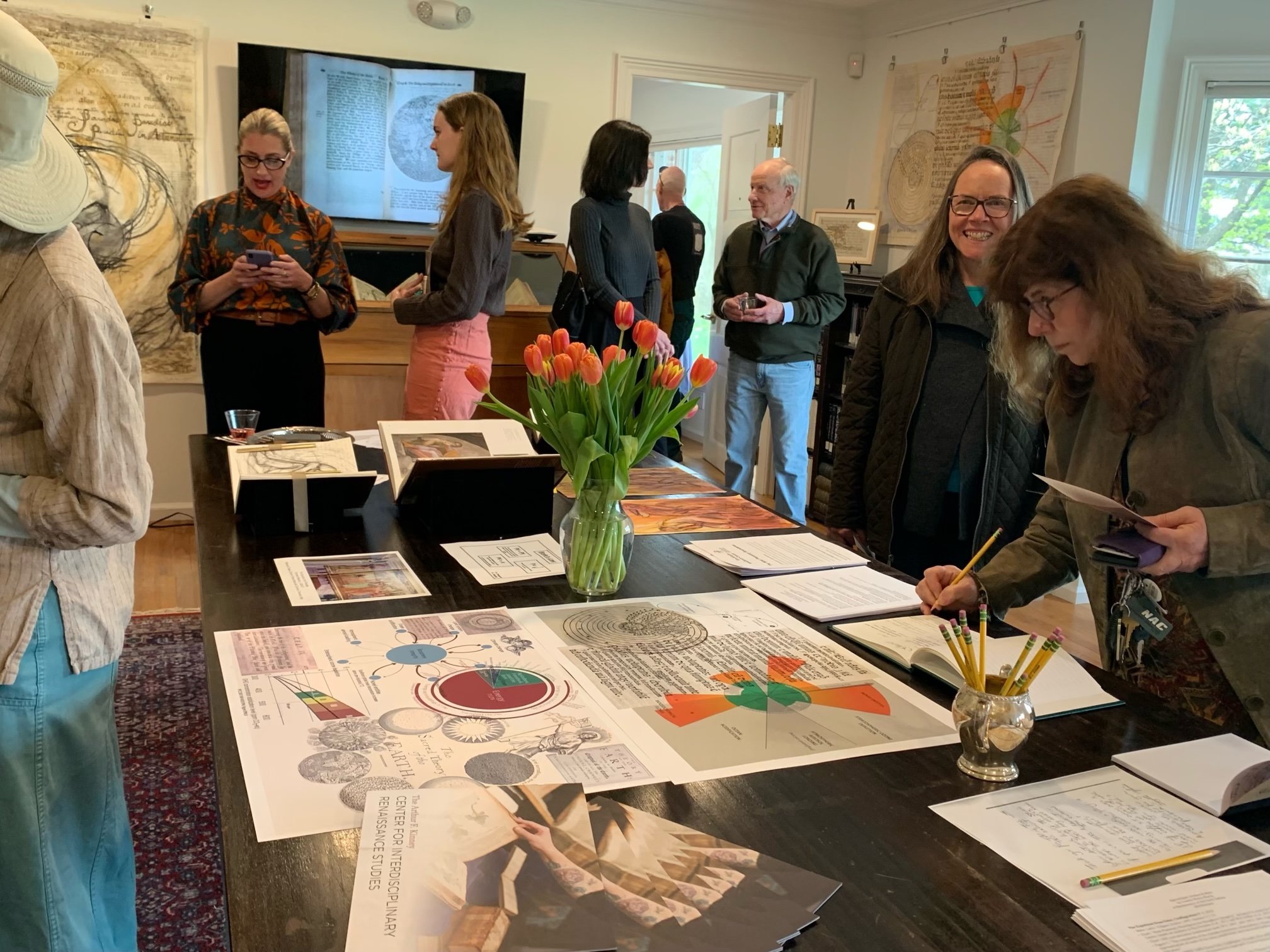
Visitors to the exhibit view the materials integral to Martin’s process, learning more about how she incorporates ideas and imagery from our rare books into her art.












